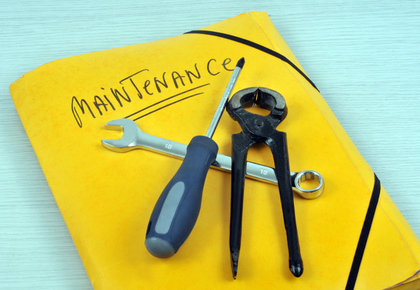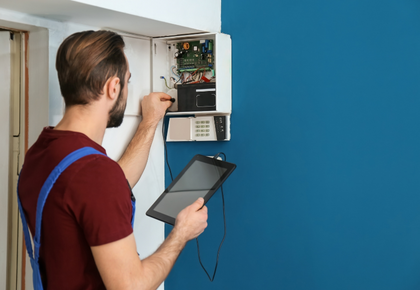 Whether in the midst of another brutal Minnesota winter or the start of a hot summer, you don’t want to get caught without a proper maintenance plan. From discovering a leak in your roof during a heavy snowfall or having a boiler or A/C stop working during record cold or hot months, taking preventive action will go a long way.
Whether in the midst of another brutal Minnesota winter or the start of a hot summer, you don’t want to get caught without a proper maintenance plan. From discovering a leak in your roof during a heavy snowfall or having a boiler or A/C stop working during record cold or hot months, taking preventive action will go a long way.
Amendment changes to the Minnesota Common Interest Ownership Act (MCIOA) required all communities to develop and adopt maintenance plans by January 2019. The board of directors for these communities are responsible for preparing and approving a written preventative maintenance plan, maintenance schedule, and maintenance budget for the common elements.
But it takes more than just developing a maintenance and repair plan. The board needs to adequately fund it and work with its property management company to ensure the plan is followed. Unfortunately, crisis situations occur all too frequently because many associations neglect to properly follow the integrated maintenance plan. Instead, they favor a reactive approach to maintenance – waiting until something breaks or fails before repairing or replacing it. It’s not unusual to see more than half of an association’s maintenance handled reactively. However, a reactive approach should only be reserved for lower-cost components.
A lack of funds is a common reason for Minnesota community associations to defer maintenance until major work is needed. Ironically, reactive maintenance is about three to nine times more expensive in the long run than a proactive approach. So, it's much more cost-effective to be proactive even if that means investing a bit of time and money upfront. Ultimately, it will relieve a lot of headaches for your board and save money for your association.
Having an integrated plan is the key to proactively addressing your property’s maintenance needs. Read on as we describe the six things you need to do to have an effective plan so your board will have more control over your property’s maintenance activities.
1. Collect all your maintenance-related information
 For most community associations, maintenance information is scattered among a variety of documents. The first step is to locate and consolidate it, including:
For most community associations, maintenance information is scattered among a variety of documents. The first step is to locate and consolidate it, including:
-
Your association's maintenance plan as required by the Minnesota Common Interest Ownership Act (MCIOA)
-
Service schedules for specific components of the maintenance plan
-
Expected costs and timeframes for replacing equipment or making major repairs to components, outlined in your reserve study and capital replacement plan
-
Maintenance recommendations in owner manuals and requirements to keep warranties valid
2. Establish which common elements require ongoing maintenance
Make a list of the equipment and components that need to be included in your maintenance plan. Start by looking at your governing documents, reserve study and vendor/maintenance contracts. It’s also helpful to walk the property to visually document building systems, public spaces, private spaces, and all services. Once the list is created, be sure to review and update on a regular basis.
3. Identify specific maintenance activities
A good reserve study will specify the types of preventive maintenance needed to ensure that a component or piece of equipment will reach its estimated useful life. However, be aware that any repairs or replacements that have been made more recently may not be included in your study. We recommend that this be done annually prior to the budget season. You may need to refer to owner manuals or warranties to find this information.
In some cases, you may need to call in a professional to analyze some systems or areas you may be less knowledgeable in. These professionals can also provide you with reasonable inspection intervals to incorporate into the maintenance schedule.
4. Create a master maintenance schedule
Your reserve study will also indicate the schedule you should follow for each item it contains. If the maintenance schedule for a particular item is missing from the reserve study, check your warranties or owner manuals, or ask the manufacturer or contractor to provide it.
A schedule is only successful if it is followed. So, once it’s created the schedule must be maintained. It’s easy to skip a task here or there but those missed tasks quickly add up and maintenance becomes a bigger headache than it needs to be.
5. If you have an onsite engineer or maintenance manager, take daily readings and make weekly inspections
 Walking the property and taking daily readings gives your engineer or maintenance manager an in-depth familiarity with equipment. Therefore, they are likely to notice subtle changes – smells, sounds, vibrations or temperature changes – that someone else might overlook if they’re not familiar with the equipment.
Walking the property and taking daily readings gives your engineer or maintenance manager an in-depth familiarity with equipment. Therefore, they are likely to notice subtle changes – smells, sounds, vibrations or temperature changes – that someone else might overlook if they’re not familiar with the equipment.
Knowing the different testing techniques will be integral to gathering the data you need. These include:
-
Vibration analysis, which measures the vibration of moving parts in machines. Monitoring these vibrations, and how they change can help anticipate failures
-
Thermal imaging, which does not require equipment shutdown
-
Large shaft alignment, technology that will keep pumps, motor shafts and impellers from damaging and misalignments to occur
-
Trends analysis, which recognizes potential areas of fault in equipment
-
Oil sampling and analysis, which identifies area of wear, along with the lubricating ability of equipment oil
6. Enlist the help of experienced professionals
A good property management company can offer a wealth of information and be able to help create your integrated maintenance plan. Your property management company brings years of experience in managing property maintenance. So, while creating a preventive maintenance plan from scratch can seem like a challenge to your board, it’s second nature for your property manager and they can guide you through the process.
You should also ask your property management company about in-house engineering services they might have available or find out if the company can refer you to a qualified engineer who understands the unique needs of HOAs.
Making the right vendor decisions is an important role for the board of directors and property manager. Check out our list of things to remember when selecting a vendor.
Preventive maintenance is a winning solution
The initial work that needs to be put into creating an HOA preventive maintenance plan may seem like a lot. However, once that plan and schedule is in place you won’t have to worry when temperatures fluctuate. As long as the schedule is followed, you’ll have peace of mind knowing that you’ve done your best to prepare your property. For more information on how your HOA can create an effective preventive maintenance plan, contact FirstService Residential Minnesota.
Need a refresher on reserve studies and funding plan basics? We gathered local and industry experts for an in-depth board member webinar. You can watch it on demand now!